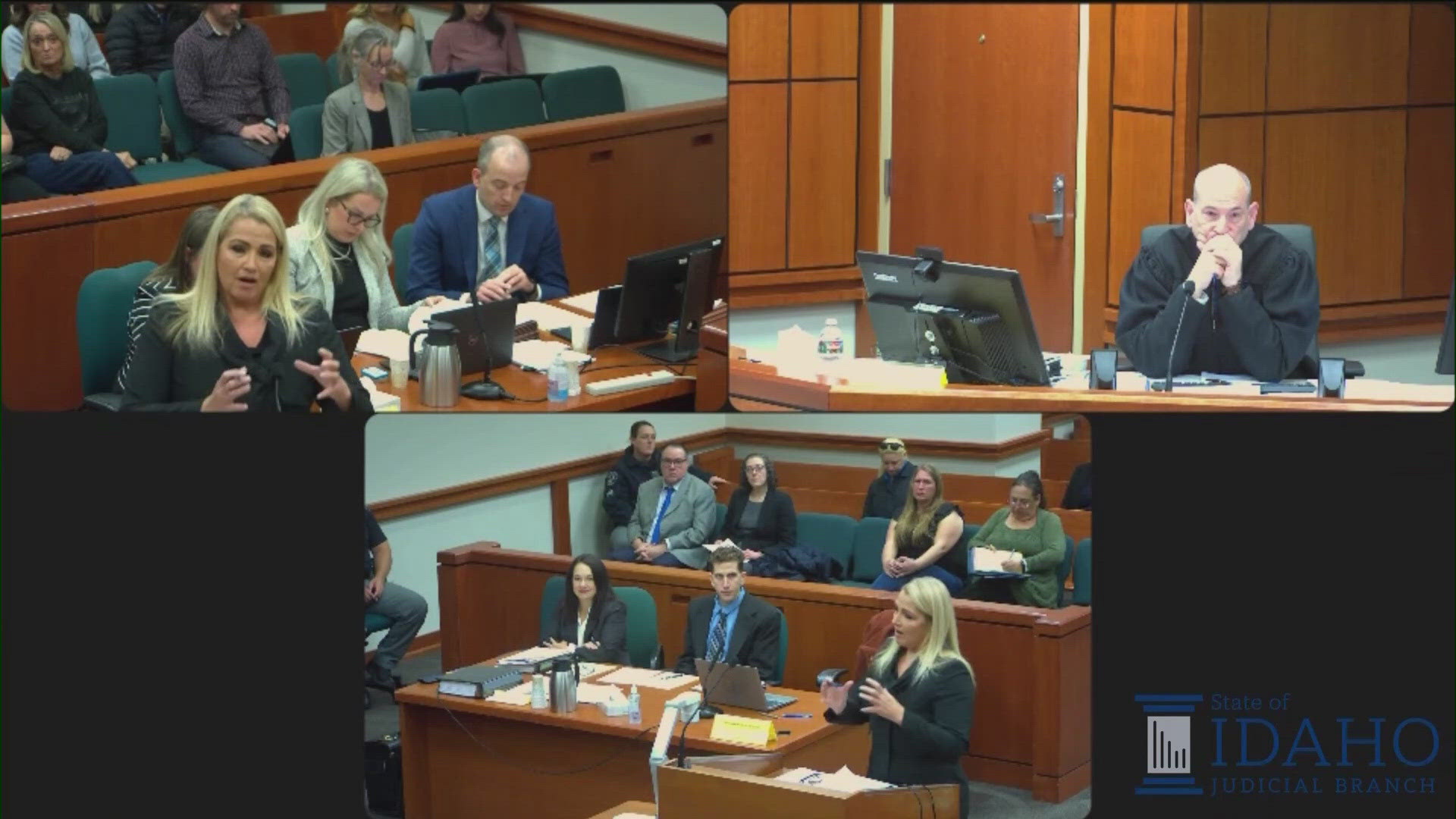BOISE, Idaho — A meager return of sockeye salmon to central Idaho this year despite high hopes and a new fish hatchery intended to help save the species from extinction has fisheries managers trying to figure out what went wrong.
The Idaho Department of Fish and Game plans to form a working group to understand why only 27 of 660,000 juvenile fish raised in the hatchery and released in central Idaho in 2018 survived the two-year, 1,800-mile roundtrip to the ocean and back to return as adults. Fisheries managers expected about 800.
The working group will "look at possible mechanisms that could have contributed to the poor survival," said John Powell of Fish and Game. The working group is expected to be formed in November.
Powell said the young fish showed good survival rates as they swam down the Salmon River to the Snake River to the Columbia River and to the ocean.
Things looked good for the return trip as well.
"We do know that environmental conditions were favorable while the (adult) sockeye were migrating back from the ocean," he said.
That would appear to indicate, he said, that significant losses occurred in either the Columbia River estuary or the Pacific Ocean.
Powell said adults that did return to Idaho tended to be smaller this year, an indication that ocean conditions might not have been favorable.
On a more positive note, 125 sockeye produced in Redfish and Pettit lakes by spawning adults and reared in the wild returned this year. Officials estimate the number of those juvenile fish, called natural-origin fish, leaving the two lakes in 2018 to be about 30,000. Sockeye salmon typically spend two years in the ocean.
Powell said natural-origin fish survive at greater rates than hatchery-origin fish. But hatchery fish surviving at a rate 30 times below natural-origin fish is much worse than typical.
An estimated 150,000 sockeye at one time returned annually to central Idaho, and Redfish Lake, near the small town of Stanley, was named for the abundant red-colored salmon that spawned there. Federal officials say the run declined starting in the early 1900s due to overfishing, irrigation diversions, dams and poisoning, eventually teetering on the brink of extinction in the early 1990s. The fish were listed as endangered under the Endangered Species Act in 1991.
An elaborate hatchery program that tracks the genetics of individual fish was started in the 1990s to save the species, including raising brood stock that never enter the wild and help produce future generations. Those fish are raised at the Eagle Fish Hatchery in southwestern Idaho and at another hatchery at NOAA Fisheries' Manchester Research Station in Port Orchard, Washington. The dual system is intended to prevent the loss of the species if a catastrophe occurs at one of the hatcheries.
Officials most recently started using a new hatchery in southeastern Idaho, the $13.5-million Springfield Fish Hatchery, to raise sockeye salmon for release in central Idaho. That hatchery is intended to eventually increase the number of young sockeye released into the wild to more than a million.
For the first time in 2017, all the young fish released came from that hatchery. But only 16% survived the trip from central Idaho to Lower Granite Dam in western Washington. Many of the fish died not long after being released into Redfish Lake Creek.
Biologists determined the young fish died because they couldn't acclimate to the hard water in the creek after being raised in the soft water at the Springfield Fish Hatchery.
So, in spring 2018 and 2019, biologists first let the young fish acclimate at the Sawtooth Fish Hatchery near Stanley that has medium-hard water.
It appeared to work as a good number of the 2018 fish successfully headed downstream, raising hopes of a good return this year. That was dashed when only 27 adult fish came back.
Of the 125 natural-origin fish that did make it back this year, genetic sampling showed that 38 came from Pettit Lake and 87 from Redfish Lake. One of the Pettit Lake fish died in captivity, and the remaining 37 were released into Pettit Lake to spawn naturally.
All 87 fish from Redfish Lake were taken to the Eagle Fish Hatchery to be artificially spawned along with the 27 hatchery-origin fish, a process that's been going on this month.
Meanwhile, biologists have released 894 hatchery-raised adult sockeye into Redfish Lake to spawn naturally. Another 101 hatchery-raised adult sockeye were released into Pettit Lake to bolster the 37 natural-origin fish released there. The young fish they produce will remain in the lakes for one to three years before heading to the ocean.
The number of fish returning to central Idaho has fluctuated widely over the last three decades. From 1991 to 1999, only 23 fish returned to central Idaho. In 2014, the program reached its peak with more than 1,500 adult fish making it back.
But in 2015, about 90% of the adult sockeye salmon returning to the Columbia River Basin died due to high water temperatures. Only 91 adult sockeye made it to Idaho, with many of those trapped in Washington after the magnitude of the unfolding disaster became clear.
Numbers rebounded following that until 2019, when only 17 made it back, followed by this year's 152.
"It's definitely encouraging to see the number of returns increase from last year," Powell said. "Last year was a very low return. But based on what we're seeing this year, it makes it difficult to set expectations for next year."



